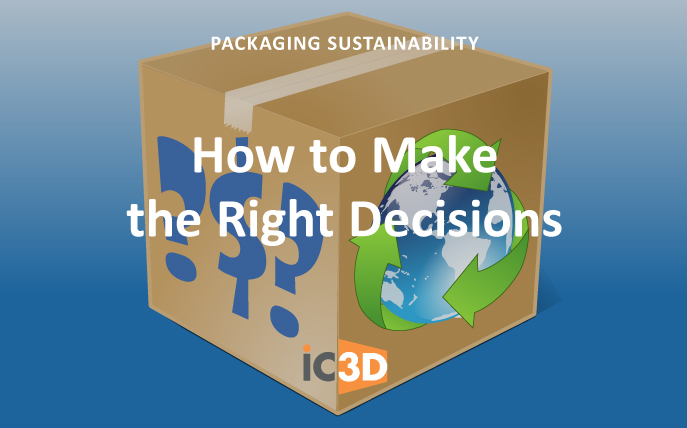When it comes to environmental sustainability, consumer product packaging often has a bad reputation. After all, landfills do contain plastic packaging that will take eons to disintegrate, and the debate over oceanic “garbage patches” rages on. Consumers are increasingly sensitive to packaging sustainability issues—to a degree that affects their purchase decisions.
It’s not always a simple matter for CPCs, however. Packaging is a key factor in influencing purchase decisions, so competitive market pressures often override the environmental issues. At best it’s a complicated process in a world where quick decisions are required
Case in Point
Let’s consider consumer electronics. There are strong, market-driven reasons manufacturers choose clear plastic clamshell packaging over a folding carton approach. Conventional wisdom says that consumers want to see what they’re buying, so most CPCs display their earphones and USB adapters the same way—in a molded plastic case destined for the landfill. With only seconds to make a purchase decision, manufacturers can’t afford to risk defying the norm.
There are packaging sustainability options, of course. Printed cardboard is fundamentally more sustainable than plastic. There are even new approaches involving more recyclable plastic. However, even when a company has a sustainability mandate, it costs money to develop alternative approaches and test them in the marketplace. For consumer electronics—as with any shelf-sensitive product line—there needs to be a more efficient means of choosing viable alternatives.
Virtual Reality to the Rescue
Marketing focus groups are designed to gauge public perception. In the case of packaging, they have traditionally relied on physical prototypes—either by themselves or in combination with alternatives and the competition. The sheer cost of these prototypes is daunting, and often a reason not to attempt it except in extreme cases. However, with virtual 3D prototypes, it is increasingly more viable to do serious “what if” market research.
In the example of consumer electronics, a manufacturer could use 3D models to test audience ratings of traditional plastic clamshell packaging versus folding cartons with printed images of the products. It could even compare different types of plastic (regular versus more sustainable substrates), so long as its reflective properties were known.
A lower-cost virtual approach to this research is possible if the 3D objects truly simulated the finished product. Fortunately, iC3D, the all-in-one packaging design software for creatives, does exactly that.
In addition to the virtual package’s appearance, a 3D approach also gives the designer an opportunity to brag about packaging sustainability. During the prototyping and testing process, design elements like “100% recyclable packaging” can be easily designed, added to the 3D model, focus group tested, and modified—all using iC3D.
Agile Decision Making
The mandate to embrace packaging sustainability is one that each CPC must make on its own, based on pressure from consumers, governments, and (ultimately) stockholders. Once that decision is made, however, it must be balanced against the marketing realities that make packaging design and production such a complex process.
As each new packaging idea or innovation occurs, companies must be ready to turn on a dime, and move forward with confidence. Their environmental decisions must mesh with the need to have their packaging be the best possible shelf marketing tool. With the right research—enabled by 3D and cloud review technology—their odds are good.






